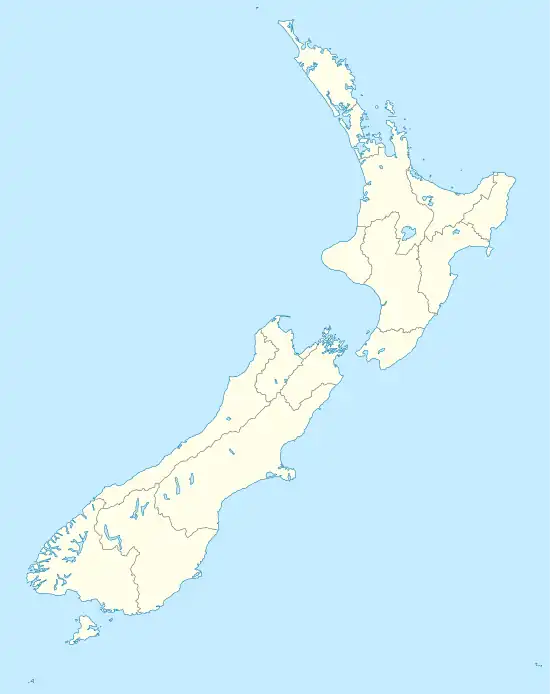Whangara
Whāngārā (Māori) | |
|---|---|
Town | |
 Whangara Location in New Zealand | |
| Coordinates: 38°34′14″S 178°13′45″E / 38.57056°S 178.22917°E | |
| Country | New Zealand |
| Region | Gisborne Region |
| Time zone | UTC+12 (NZST) |
| • Summer (DST) | UTC+13 (NZDT) |
| Area code | 06 |
Whangara (Māori: Whāngārā [faː.ŋaː.ɾaː]) is a small community in the northeast of New Zealand's North Island,[1] located between Gisborne and Tolaga Bay, five kilometres southwest of Gable End Foreland and two kilometres east of State Highway 35.
The settlement features prominently in the early history of the Ngāti Porou iwi,[2] as the site where Tamatea, captain of the Tākitimu canoe settled on arriving in New Zealand. Canoe races were held at nearby Pikopiko-i-whiti, with the people watching from a hill called Puke-hapopo. The place name may be cognate with Fa'ara on Taha'a island in French Polynesia.[3]
Whangara was the location and setting for Witi Ihimaera's novel The Whale Rider and its film adaptation.[4]
Parks
Te Tapuwae o Rongokako Marine Reserve is a marine reserve covering 2,450 hectares of coastline south of Whangara, which is managed by the Department of Conservation.[5] The name means "The footprints of Rongokako," referring to an ancestor of Ngati Kahungunu who is said to have left a footprint at the site.[6][7]
Marae
The local Whāngārā Marae is a meeting place for the Ngāti Porou hapū of Ngāti Konohi.[1][8] It includes a wharenui, known as Whitirēia or Waho Te Rangi.[9]
In October 2020, the Government committed $49,626 from the Provincial Growth Fund to upgrade the marae, creating an estimated 3.4 jobs.[10]
Education
Whangara School is a Year 1–8 co-educational state primary school.[11] In 2019, it was a decile 2 school with a roll of 78.[12][13]

References
- 1 2 Soutar, Monty (30 March 2015). "Story: East Coast places". Te Ara - the Encyclopedia of New Zealand. Retrieved 5 April 2019.
- ↑ Chapter 1: Mohena Kohere's antecedents, in The Story of a Maori Chief, by Reweti T. Kohere. Reed Publishing (NZ) Ltd, 1949. Part of the New Zealand Texts Collection, New Zealand Electronic Text Centre, Victoria University. Retrieved 27 November 2009.
- ↑ Best, Elsdon (1917). "Some place names of islands of the Society Group". 26 (3): 112.
{{cite journal}}: Cite journal requires|journal=(help) - ↑ Sheila Johnston. Riding the crest of the whale, telegraph.co.uk, 5 July 2003. Retrieved 27 November 2009.
- ↑ "DOC Places to Go - East Coast". doc.govt.nz. Department of Conservation.
- ↑ Mitchell, J. H. (2014). Takitimu: A History of Ngati Kahungunu. Libro International. p. 55. ISBN 978-1-877514-72-2.
- ↑ Royal, Te Ahukaramū Charles (2007). "Stories of people and land". Te Ara: The Encyclopedia of New Zealand. Retrieved 31 December 2023.
- ↑ "Te Kāhui Māngai directory". tkm.govt.nz. Te Puni Kōkiri.
- ↑ "Māori Maps". maorimaps.com. Te Potiki National Trust.
- ↑ "Marae Announcements" (Excel). growregions.govt.nz. Provincial Growth Fund. 9 October 2020.
- ↑ "Official School Website". whangara.school.nz.
- ↑ "Ministry of Education School Profile". educationcounts.govt.nz. Ministry of Education.
- ↑ "Education Review Office Report". ero.govt.nz. Education Review Office.
External links